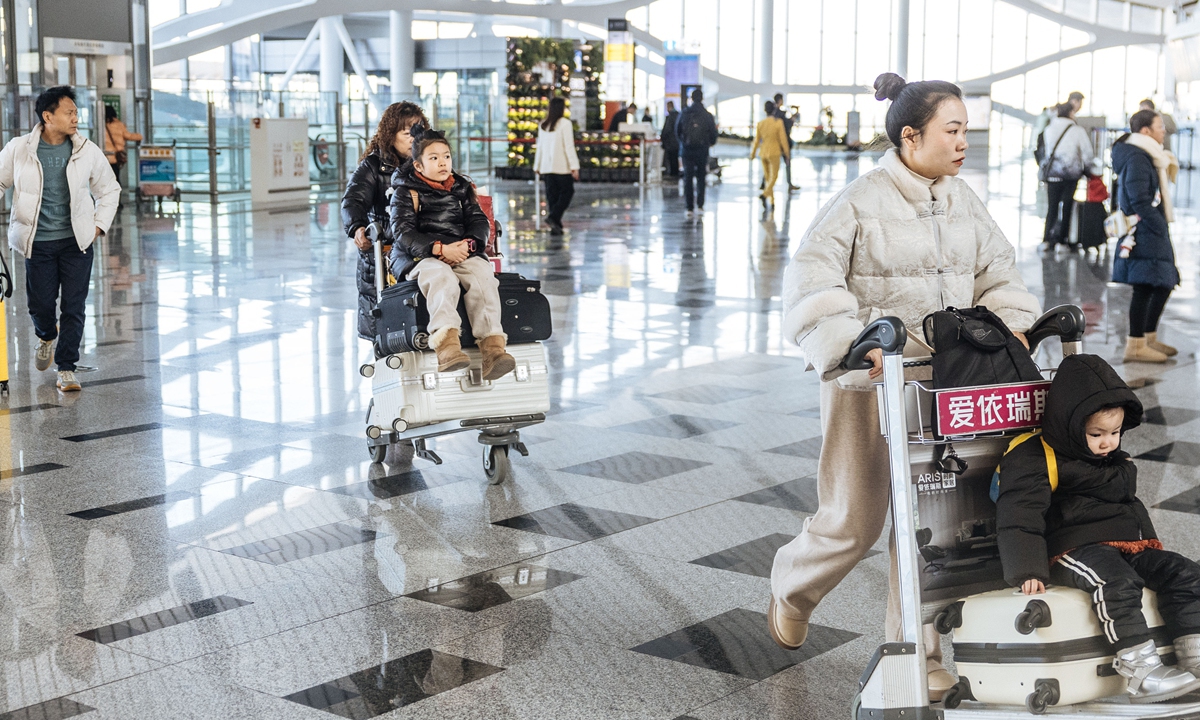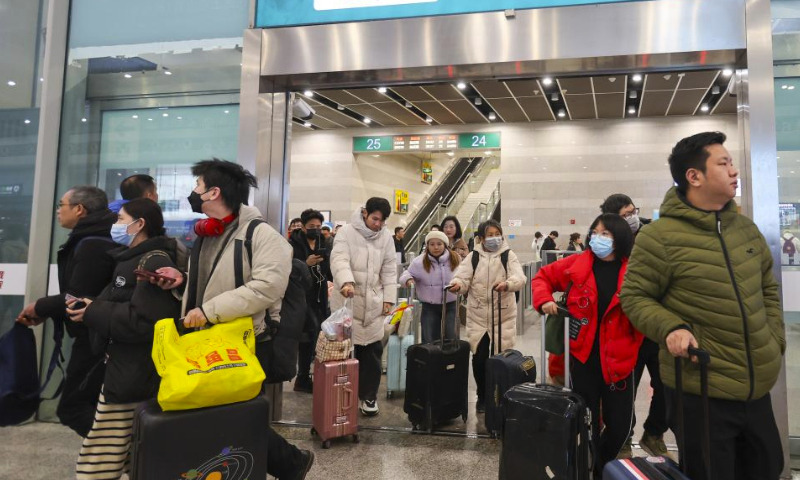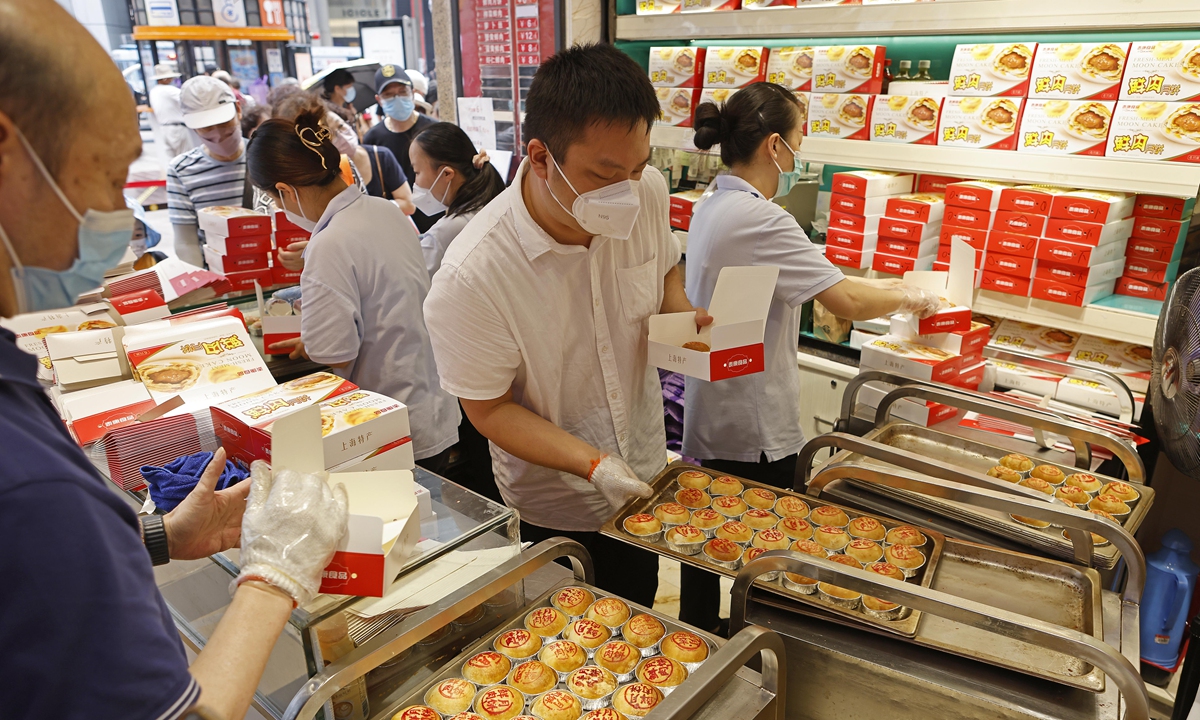Long holidays, policies set to drive China’s retail growth: experts
Anticipated surge in consumption
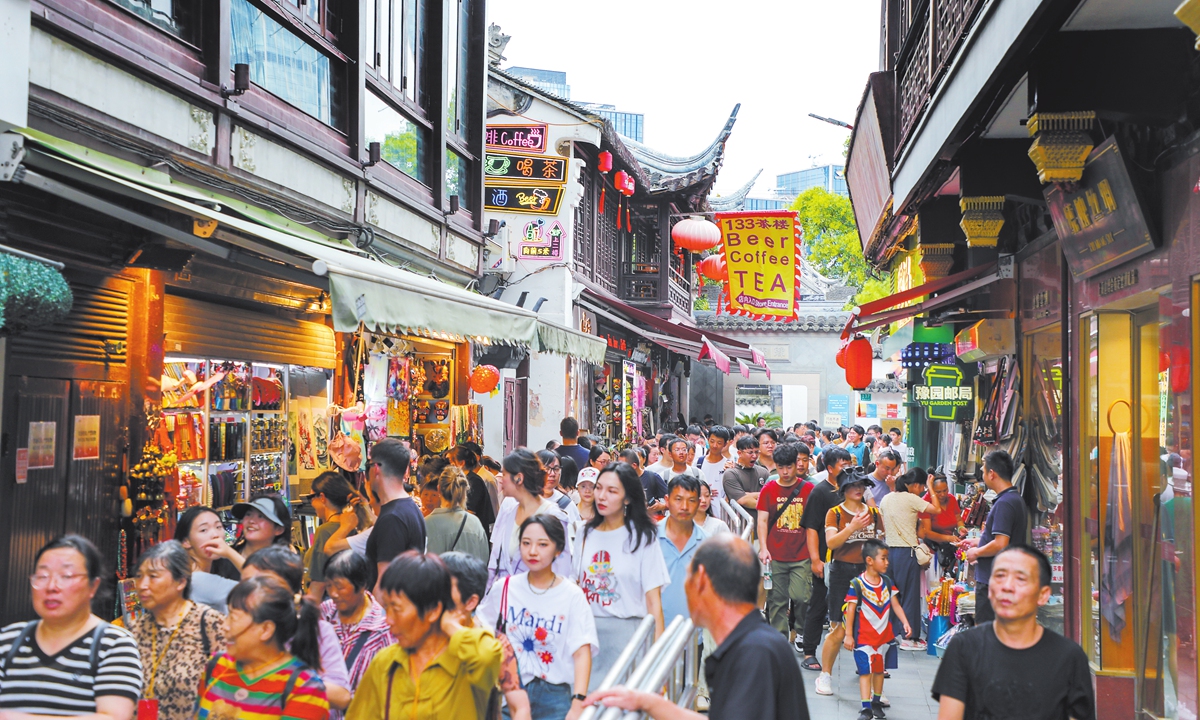
Tourists at Yuyuan in Shanghai on September 15, 2024, the first day of the three-day Mid-Autumn Festival holidays Photo: VCG
Beijing-based white-collar worker surnamed Miao and his girlfriend visited Southwest China's Chongqing city during the Mid-Autumn Festival holidays last week, and they found the popular scenic spots like the Chongqing Zoo were packed with sightseers, despite the scotching heat there.
Aware of the giant pandas' popularity at the zoo, Miao and his girlfriend woke up early and rushed to the zoo in order to secure a good spot. However, the giant panda pavilion was already crowded with hundreds of people, Miao told the Global Times on Sunday.
The bustling scenes in Chongqing are just vivid snapshots illustrating the consumption peak season of the so-called "golden September and silver October," fueled by a surge in tourism.
As the seven-day National Day holidays are approaching which starts on October 1, observers expect the heated tourism momentum will sustain, propelling the country's economic recovery in late 2024.
Cultural tourism
The Mid-Autumn Festival holidays witnessed a rise in the popularity of Chinese traditional cultural resorts. Online searches for moon-viewing tours grew by 61 percent, while searches for lantern-viewing tours skyrocketed by 267 percent compared with last year, according to data provided by online travel platform Fliggy.com.
Cultural tourism has become a major trend for domestic travelers during the holidays, with the number of tourists steadily increasing, bolstered by the implementation of the government's support policies and upgraded tourism infrastructure and services, said Cong Yi, a professor at the Tianjin School of Administration.
A total of 107 million domestic tourism trips were made during the Mid-Autumn Festival holidays from September 15 to 17, which grew by 6.3 percent year-on-year. Tourism-related spending soared by 8 percent from 2019 to reach 51.047 billion yuan ($7.24 billion), the Ministry of Culture and Tourism said.
Not too far from the Mid-Autumn Festival, the National Day holidays will last from October 1 to October 7 - making it a "golden week." Data released by major online travel platforms showed a growing interest of the public in both domestic and international tourism.
A rising number of Chinese have opted to travel overseas during the seven-day-long break. Multiple tourists told the Global Times that they have planned to travel to destinations such as Thailand, Japan, Spain and Iceland.
The outbound flight and hotel bookings on Chinese online travel agency Qunar.com for the "golden week" covered 1,597 cities in 144 countries and regions, the company said.
The number of tourist visas handled by another travel platform Trip.com for the upcoming holidays grew by 70 percent year-on-year, the platform said in a statement sent to the Global Times.
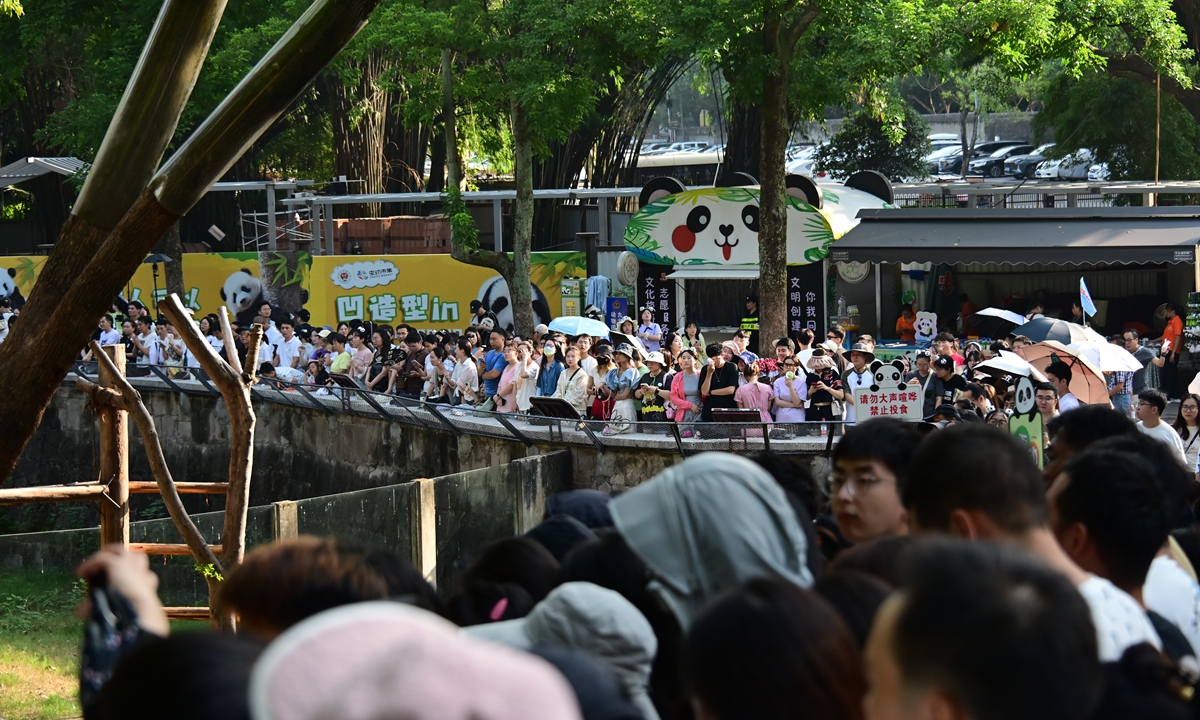
Crowded people at the giant panda pavilion of the Chongqing Zoo on September 17, 2024 Photo: Tao Mingyang/GT
As for domestic traveling, autumn-themed activities and outdoor scenic spots have been trendy as travelers aim to catch up with the beautiful autumn weather and scenery in major Chinese cities like Beijing, Shanghai, Xi'an, Chengdu and Chongqing.
The search volume for "autumn outing" on an online tourism platform Mafengwo.com increased by 116 percent year-on-year, the company said. From September 29 to October 8, China's railway system is expected to transport 175 million passengers, with a peak of more than 21 million trips to be made on October 1, the first day of the National Day holiday.
Retail sales during the coming "golden week" holidays are expected to keep pace with the Mid-Autumn Festival holidays, which will further boost the Chinese economy, Zhang Yi, CEO of iiMedia Research Institute, told the Global Times on Sunday.
Stepped-up support
The holidays used to drive up market demand for big-ticket commodities such as home appliances and automobiles, and the sales will be boosted by the government's policy support to promote domestic consumption through a series of consumer goods trade-ins.
Yiwu city in East China's Zhejiang Province launched a promotional event for car trade-ins during the Mid-Autumn Festival holidays, and business orders worth more than 100 million yuan for 650 vehicles were signed, the Economic Information Daily reported. The consumer traffic for Chinese home appliance giant Suning's offline stores increased by 244 percent during the festival, the newspaper said.
While China's home consumption is undergoing structural changes, the substantive government policy support, including the trade-in plan, is expected to unleash higher domestic consumption in the remaining months this year, Cong told the Global Times on Sunday.
Cong is optimistic about the country's consumption thanks to the enhanced government policy support.
In the first eight months of 2024, retail sales of consumer goods increased by 3.4 percent year-on-year, according to data provided by the National Bureau of Statistics (NBS). Online sales remained a bright spot, rising by 8.9 percent year-on-year.
NBS spokesperson Liu Aihua recently highlighted the recovery trend of China's domestic consumer market, typically in services, new-type consumption and online sales.
Nevertheless, Liu noted that consumption recovery still faces some restraints, prompting the authorities to channel more energy to ramping up consumer confidence and stimulating public consumption.
"The improved government policies and better products and services provided by the market, means the potential of consumption will be unleashed at a faster pace and the consumer market will have a more solid foundation for recovery," Liu said.
